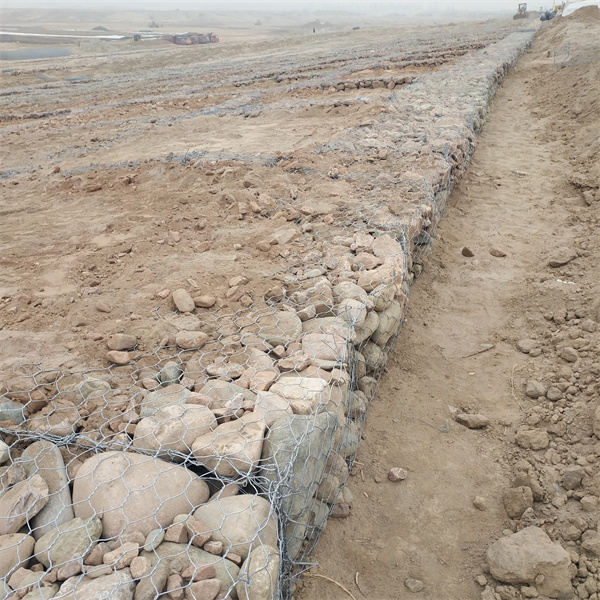Abe . 16, 2024 07:26 Back to list
gabion retaining wall maximum height suppliers
Gabion Retaining Walls Maximum Height and Supplier Considerations
Gabion retaining walls have gained significant popularity in recent years due to their innovative design, aesthetic appeal, and environmental benefits. Comprising wire mesh containers filled with rocks or stones, these structures serve various purposes, including soil stabilization, erosion control, and landscape enhancement. When considering gabion walls, it is essential to address important aspects such as maximum height, the selection of suppliers, and overall implementation strategies.
Understanding Gabion Walls
Gabion walls are primarily used to retain soil and prevent erosion. They consist of interconnected gabions—sturdy cages typically made of steel or other corrosion-resistant materials. These cages are filled with durable stones, boulders, or recycled materials, making them effective for both residential and commercial applications. One of the key advantages of gabion walls is their flexibility in design, allowing engineers and architects to create structures tailored to specific project needs.
Maximum Height of Gabion Retaining Walls
The maximum height of a gabion retaining wall is a crucial factor to consider, as it directly impacts the engineering design and overall stability of the wall structure. Generally, gabion walls can be built to a maximum height of about 3 to 4 meters (approximately 10 to 13 feet) without requiring extensive engineering and reinforcement. However, this maximum height can vary based on several factors, including the type of soil behind the wall, the slope of the terrain, and local regulations governing construction practices.
1. Soil Conditions The type of soil behind the retaining wall plays a pivotal role in determining its height. Cohesive soils, such as clays, offer different stability characteristics than granular soils like sands. An assessment of the soil's bearing capacity is necessary to ensure that the wall can adequately support the weight without risk of collapse.
2. Drainage Proper drainage is essential for any retaining wall, including gabion walls. Water pressure behind the wall can lead to failure, especially at greater heights. Incorporating drainage solutions, such as perforated pipes or weep holes, can relieve hydrostatic pressure and increase the wall's height capacity.
3. Local Regulations Depending on your location, local building codes may dictate specific guidelines regarding the height and construction of retaining walls. It is advisable to consult local authorities, as well as a structural engineer, to ensure compliance with all applicable regulations.
gabion retaining wall maximum height suppliers

Choosing the Right Supplier
Selecting the right supplier for gabion retaining walls is critical for ensuring quality, durability, and compliance with design specifications. Here are key factors to consider when evaluating gabion wall suppliers
1. Experience and Reputation Look for suppliers with a proven track record in manufacturing and supplying gabion products. Customer reviews, project portfolios, and testimonials can provide valuable insights into their experience and reliability.
2. Material Quality Verify that the materials used in the gabions meet industry standards. For instance, the wire mesh should be galvanized or coated to prevent rust and corrosion, especially in moisture-rich environments.
3. Customization Options Good suppliers should offer customization, allowing you to select specific dimensions, wire gauge, and filling materials to meet your project’s requirements.
4. Technical Support Reliable suppliers will also provide technical assistance to help with design and installation. This includes guidance on appropriate engineering practices, drainage solutions, and maintenance considerations.
5. Cost and Availability While the price is always a consideration, it is essential to balance cost with quality. Ensure that your supplier can deliver the products within a reasonable timeframe to keep your project on schedule.
Conclusion
Gabion retaining walls represent an effective solution for soil retention and erosion control, offering flexibility in design and a natural aesthetic. When planning your project, understanding the maximum height limitations and partnering with reputable suppliers are essential steps to ensure the longevity and success of your gabion wall. By doing so, you can achieve a durable structure that meets both functional and visual needs within your landscape.
-
HESCO Gabion Baskets for Coastal Erosion Prevention
NewsAug.22,2025
-
Longevity and Durability of River Rock Gabion Walls
NewsAug.22,2025
-
How to Integrate Gabion 3D Walls in Urban Planning
NewsAug.22,2025
-
Reno Mattress Gabion Applications in Civil Engineering
NewsAug.22,2025
-
How to Install Wire Mesh for Gabion Baskets Properly
NewsAug.22,2025
-
Best Materials for Filling a Chain Link Gabion
NewsAug.22,2025
-
Wire Mesh Thickness Impact on Gabion Wall Load Bearing
NewsAug.12,2025






